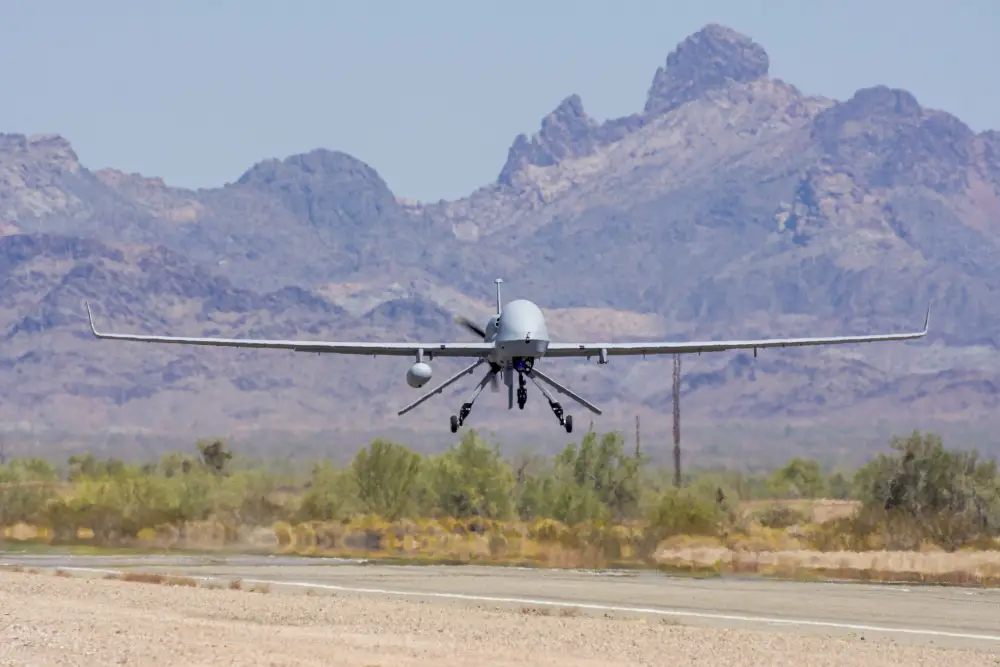The future arrived at U.S. Army Yuma Proving Ground (YPG) in the summer of 2020, and the U.S. Army called it Project Convergence. The breadth of equipment and knowledge demonstrated was astonishing and unprecedented, from autonomous vehicles to air launched effects, and took the combined efforts of hundreds of personnel over the course of eight months of preparation. The superlatives were found in statements from the most senior leaders in the Army, quoted in media outlets with national and international reach. Leaders with a historical mindset likened the significance of Project Convergence with the Louisiana Maneuvers, which prepared American Soldiers of the early 1940s for eventual participation in World War II.
Gen. James McConville, Army Chief of Staff: “This is a major step forward in transforming the United States Army for the next 40 years.”
Gen. John Murray, Army Futures Command: “This may be not only be the most important thing Army Futures Command is working on, it may be the most important thing the Army is doing today.”
“This was the largest, most high profile capabilities demonstration we’ve had in YPG’s history, going back to World War II,” said Lt. Col. Alicia Johnson, Yuma Test Center commander. “The flexibility, professional competency, and expertise of the workforce was tremendous. The rest of the country had an opportunity to see what I see every day.”

The project combined both developmental and operational testing, and at various points throughout the six weeks more than 900 visiting support personnel were on the ground. In the last week, there were two distinguished visitor days: one for three star generals and below, one for four star generals. The Secretary of the Army, Undersecretary of the Army, Army Chief of Staff, and Army Vice Chief of Staff were among the visiting dignitaries—one could be forgiven for thinking that YPG was, for a brief moment, Pentagon West. For such a massive undertaking, the original idea was significantly more modest, at least so far as the small core group at YPG could see.
From its initial conception in November 2019, however, the project’s ambitions grew to match that of the Army Futures Command, which is seeking to dramatically alter the speed and efficiency of the Army’s acquisition process. YPG’s personnel were never intimidated by the growing objectives, however: as the fourth largest Department of Defense installation in land area, YPG had the range space, infrastructure, and specialized experience to accommodate multiple tests from multiple commodities simultaneously. It was what the proving ground does on a daily basis, albeit with a much higher degree of attention and oversight, and with far more assistance from visiting personnel.

For all of the high level and very public visibility, the event was still a test and was conducted as such. Beyond the objective of using artificial intelligence and machine learning to reduce the amount of time from identification to prosecution of a target from minutes to seconds, more than a few of the equipment tests associated with the multiple CFTs that participated in PC were groundbreaking in their own right. The XM-1113 155 mm artillery round, which boasts a much larger rocket than its currently fielded counterpart, has been test fired numerous times by YPG personnel in the past two years, but always with an inert projectile—until PC. This first look ever required additional instrumentation and personnel to gather data.
In keeping with YPG’s longstanding reputation, the entire PC project was conducted without reportable injuries, despite a multitude of hazards for the visiting personnel. Operations were conducted on far-flung locations across YPG’s rugged ranges, sometimes on high promontories accessible only by rocky unimproved roads with grades greater than 20%. The proving ground was selected in part for its extreme desert conditions, and the mercury didn’t disappoint: Over the course of the six weeks PC ran, YPG saw nine days of record-breaking heat. The lack of injuries was credited to daily safety briefings and frequent reminders throughout the day.

The other large, ever-present safety hazard to mitigate was COVID-19: Both the visitors and the YPG personnel directly supporting the effort were required to take a COVID test at the beginning of PC, and some were retested periodically throughout the duration of the event. Visiting personnel were generally restricted to so-called ‘bubbles’ that were separate from each other, and asked to restrict their off-duty activities to only essentials like grocery shopping or purchasing gasoline. All movements into and out of the bubbles were monitored and logged in case contact tracing became necessary. No one took ill during the event, a testament to the protocols that YPG personnel developed.
Though Project Convergence (PC 20) just ended, plans are already well underway for the next two demonstrations. U.S. Army planners are striving to include equipment from all eight of the CFTs in the 2021 iteration of the event, and include participation from all Department of Defense branches. The intended breadth of future iterations of PC suggests that no installation in the world would be large enough to contain all of its activities. Without question, YPG will remain extremely relevant in U.S. Army modernization efforts.
















